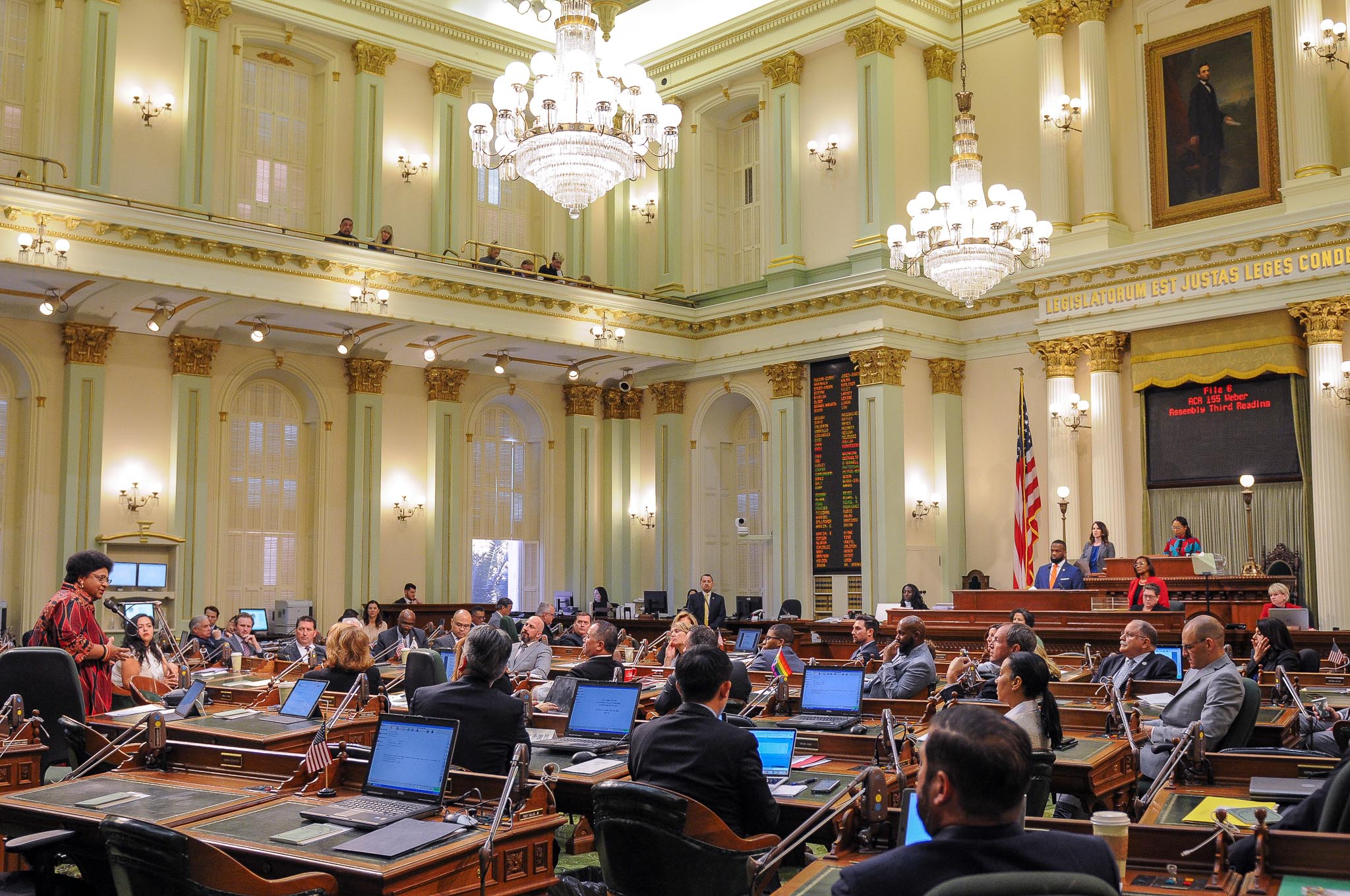
California State Capitol. (Photo: Kevin Sanders for California Globe)
Legislative Intent Does Not Equate to a Mandate
California courts have been clear in the distinction between intent and statutory language
By Chris Micheli, April 27, 2024 2:30 am
I am not sure if it is because of the budget situation and a desire to reduce costs for a bill, or a misunderstanding about intent versus statutory language, but those involved in the California Legislature and its legislative process should be aware of the difference.
In the 2024 Legislative Session, there are a growing number of instances in California bills (and statutes) where we can find statements of intent by the Legislature. While there is nothing inherently problematic about intent statements (in fact, they can be quite helpful in cases of statutory construction when a statute is ambiguous), they do not equate to a statutory requirement or mandate.
In other words, intent statements do not equate to mandatory (or binding) language. As intent statements, they cannot be a substitute for requiring an act by statute. While broad statements of intent are most appropriate in my opinion for giving interpretation guidance, for specific statements of legislative intent, they need to be turned into mandatory or permissive statutory language. Otherwise, intent language is simply not binding. It is only an opinion. Intent statements do not have any authority of law.
For example, a recent California appellate court decision stated: “Legislative findings and statements of purpose in a statute’s preamble can be illuminating if a statute is ambiguous. But a preamble is not binding in the interpretation of the statute. Moreover, the preamble may not overturn the statute’s language.”
We know that statutes in this state use the word “shall” to be mandatory and the word “may” to be permissive. When the Legislature has a specific intent statement, why not turn that statement into a mandatory or permissive one so that it is actually binding, rather than merely a statement? The following is an example from a recent bill and how it will be a mandatory provision of law, rather than an intent statement:
It is the intent of the Legislature that the The department, in establishing a system pursuant to this section, shall maximize the use of available federal funds.
I appreciate this proposed change in existing law because it turned a simple statement of legislative intent, that did not have any force of law, into a requirement that the specified state department actually do something. The intent statement had no effect to it. It simply stated the intent of the Legislature that the department would hopefully do something in the future. This bill amended that unenforceable language and instead directs the department that they have to establish the specified system.
Again, California courts have been clear in the distinction between intent and statutory language. For example, the Supreme Court explained: “In considering the purpose of legislation, statements of the intent of the enacting body contained in a preamble, while not conclusive, are entitled to consideration. Although such statements in an uncodified section do not confer power, determine rights, or enlarge the scope of a measure, they properly may be utilized as an aid in construing a statute.”
A more recent California Supreme Court decision in 2023 said: “As explained above, we view the Legislature’s uncodified language not as imposing a standard or condition for discovery or admission, but as an interpretive aid in construing the statutory scheme.”
As a result, if the Legislature wants something to have the force of law, it cannot rely on mere intent language to accomplish that goal. Instead, the Legislature has to use affirmative, statutory language in order to create a mandate. Otherwise, it will just be wishful thinking by the legislative branch.
- Location of a Missing Party in Child Custody Cases - December 31, 2025
- Valuation for Eminent Domain - December 31, 2025
- Third Quiz on Where Areas of Law Are Found in the California Codes - December 30, 2025





Intent = Hedge = CYA